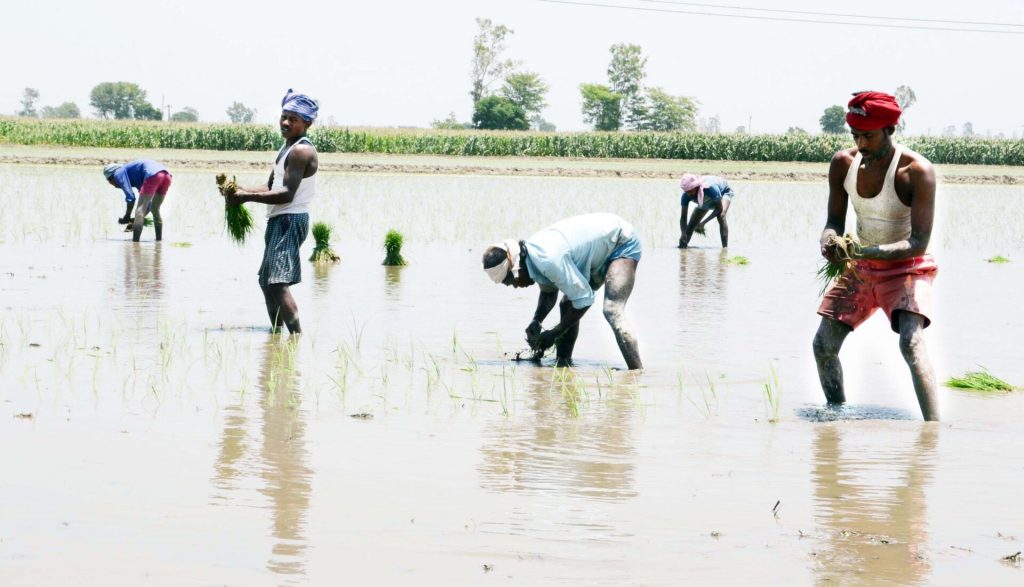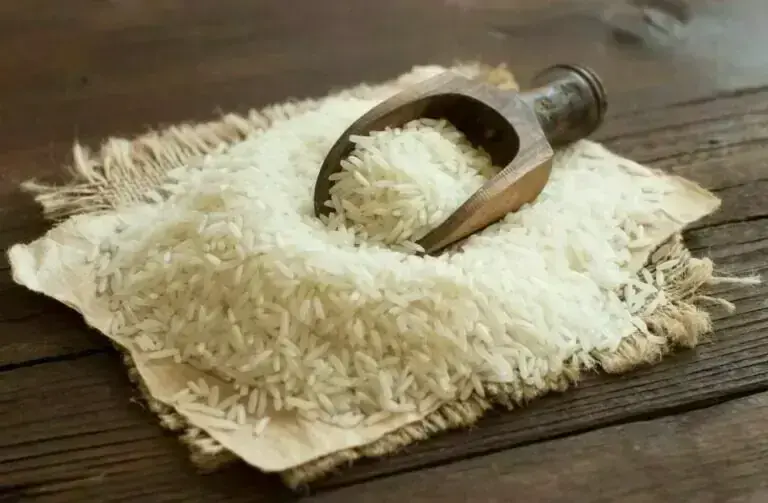Tags
Paddy cultivation surges in Punjab and Haryana.

By Neeraj Mohan
Farmers in Punjab and Haryana persist with paddy cultivation despite environmental concerns and diversification efforts.
Chandigarh: In the country’s agrarian heartlands of Punjab and Haryana, farmers remain deeply entrenched in the cycle of paddy cultivation, despite mounting environmental concerns and the introduction of government-backed incentive schemes promoting crop diversification.
Ground-level reports collected from farmers reveal that the area under paddy cultivation in both states is set to rise again this year. Officials expect the area under paddy cultivation to increase beyond last year’s nearly 19 lakh hectares, as nearly 23 lakh hectares have already been sown compared to 18.50 lakh hectares during the same period last year, with transplantation likely to continue until the end of July. Farmers and experts cite the Punjab government’s decision to allow early transplantation from June 1 instead of June 15, which puts extra pressure on groundwater resources.
According to figures, Punjab saw paddy cultivation on a record 32.44 lakh hectares in 2024, including 6.39 lakh hectares under basmati rice. With paddy transplantation in full swing, officials predict that the state is set to match or even exceed the previous year’s acreage. Despite the government’s efforts and expenditure of hundreds of crores on crop diversification, paddy now dominates more than 90 percent of Punjab’s total kharif-sown area of 36 lakh hectares, illustrating the near-total dominance of the crop in the state’s agricultural calendar.
Similarly, in Haryana, the area under paddy cultivation is likely to rise beyond the traditional 15 lakh hectares, which accounts for 50% of the total 30 lakh hectares of farmland in the state. The government’s efforts to promote the Direct Seeded Rice (DSR) technique, which uses 90% less water than the traditional method, have yielded better results in Haryana over the past couple of years, with nearly 5 lakh acres coming under DSR.
However, the reason behind the surge in paddy cultivation is the shift by farmers in both states from cotton to paddy. Cotton was previously considered the best alternative to paddy, especially in dry and rain-fed areas, but with the installation of more tubewells and availability of water, farmers now prefer to grow paddy over cotton.
Figures reveal that in Punjab, the area under cotton cultivation has declined to nearly 99,000 hectares in 2024 from 3.35 lakh hectares in 2015. Similarly, in Haryana, in the last four kharif seasons alone, Jhajjar—earlier known for cotton—has added 67,500 acres under paddy cultivation, followed by 60,000 acres in Sirsa, as farmers find paddy more remunerative.
Farmers say this expansion has largely come at the expense of cotton, which has been steadily declining due to repeated pest attacks and fluctuating market prices. Punjab and Haryana were long at the centre of the Green Revolution, but now paddy has become a threat to groundwater because it is a water-intensive crop, requiring between 4,000 and 5,000 litres of water per kilogram of rice.
Besides at least 30 days of flooding fields with 3 to 4 inches of water, paddy sowing requires nearly 20 to 25 irrigations until harvesting, leading to excessive groundwater use in both states.
Punjab has recorded an 11.94-meter drop in groundwater levels during this period, with 88 blocks classified as over-exploited. According to the latest Ground Water Level Bulletin released by the Central Pollution Control Board (CPCB), water levels in Punjab have declined in 80.81% of the wells monitored, covering 79.36% of the state’s geographical area. The figures reveal that 87% of Punjab’s 153 groundwater blocks are categorized as over-exploited, critical, or semi-critical. A decline of 2–4 meters was reported in 11.61% of wells, affecting 1.55% of the monitored area. A severe decline of more than 4 meters was observed in 4.02% of wells, primarily in paddy-growing pockets.
https://sundayguardianlive.com/news/paddy-cultivation-surges-in-punjab-and-haryanaPublished Date: July 7, 2025






